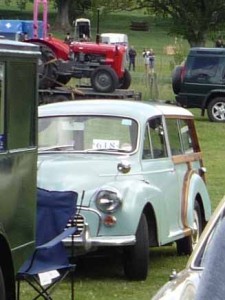By Alan Clawley.
I’m one of those motorists who can’t easily tell the difference between a Hyundai and a Datsun. As long as a car works I don’t really mind what its bumpers or lamp clusters look like. Some motorists can tell at a glance whether a car is a 2011 model or one five years old, but I believe that most of us think they all look so alike that we will absent-mindedly try to open the door of any car in a car park that’s the same colour and shape as our own.
This general similarity between the same type of product designed by different designers may be peculiar to the automobile industry. Sometimes only the manufacturer’s badge helps a novice spot the difference. All cars perform roughly the same function, have four wheels, a number of seats and one steering wheel.
On the other hand buildings designed by architects diverge widely in their appearance and can even be unrecognisable as buildings. Post-modern architects go out of their way to shock whilst traditionalists reject anything modern and hark back to the old days. There is no general agreement even about what a ‘hospital’ or a ‘railway station’ should look like.
Imagine therefore what cars would be like if architects designed them. In the same year of production we could have the ‘Duchy Original Saloon’ that only has a reverse gear, the ‘Bauhaus Special’ with the clean pure look of an ocean liner; the ‘Gehry Estate’ that rarely moves because of its poor aerodynamics, unlike the ‘Gherkin GT’ which would leave all the others standing. A car that did look as if it might have been designed by Prince Charles’s architect was the Morris Traveller Estate, often lampooned as ‘Half-timbered’ or ‘Mock Tudor’. In 1933 the architect and dome engineer Buckminster Fuller did design a car called the Dymaxion, but it didn’t catch on.

Buildings are obviously not the same as cars, but cars are generally nice to look at and on the whole quite attractive, so we never have opinion polls for ‘Most Ugly Car of the Year’ or a phone-in on which model we would consign to the scrap heap without further ado. The automobile industry has moved on from the Austin Allegro and Morris Marina.
The same cannot really be said of the work of architects. There’s no real consistency in appearance or technical prowess. Every building is a one-off. The architect may not be able to guarantee that the building won’t leak or tell the future owner how energy-efficient it will be, or how long the heating system will last. Anyone buying a new car would insist on knowing its fuel consumption and expect perfect performance, paint finish and upholstery. They will also have a very good idea how long it will be before it is consigned to the scrap heap, or returned to the manufacturer to be recycled. Each car is more or less as technically advanced as the other as the solutions to common mechanical problems are applied universally and are there for everyone to see and use.
In architecture every building tends to be a prototype. Architects seldom repeat their successes or get the chance to learn from technical failures because each new client wants something different. Architects may never build the same design twice in the whole of their careers.
It’s a puzzle to know why we view cars differently from architect-designed buildings. Only the very wealthy can afford to hire an architect and wealthy people are not shy about flaunting their wealth. Hence the rise of the modern ‘starchitect’ who is willing to design a unique work of art or ‘iconic’ building for any client willing to pay. As we know in the case of Birmingham’s new library this phenomenon is not confined to the private sector.
There are however, some architects who, like car designers, give at least as much attention to ‘performance’ as to ‘appearance’. Nottingham architects Brenda and Robert Vale are known, not for ‘stunning’ buildings, but for environmentally-friendly ones that are also good-looking. Their book, ‘Green Architecture – Design for a sustainable future’ (1991) is illustrated with their Woodhouse Medical Centre in Sheffield, a building that would never be nominated for the Stirling Prize, but which has many hidden features such as maximum insulation, an efficient heating system, and uses lots of local materials and timber. The building fabric was designed to retain heat and laid out to benefit from natural light.
We have surely seen enough ‘iconic’ new buildings by now to last a lifetime. The resources used for new buildings are running out or are getting more expensive. The motor industry has responded with the electric car. What will architects do with buildings?



